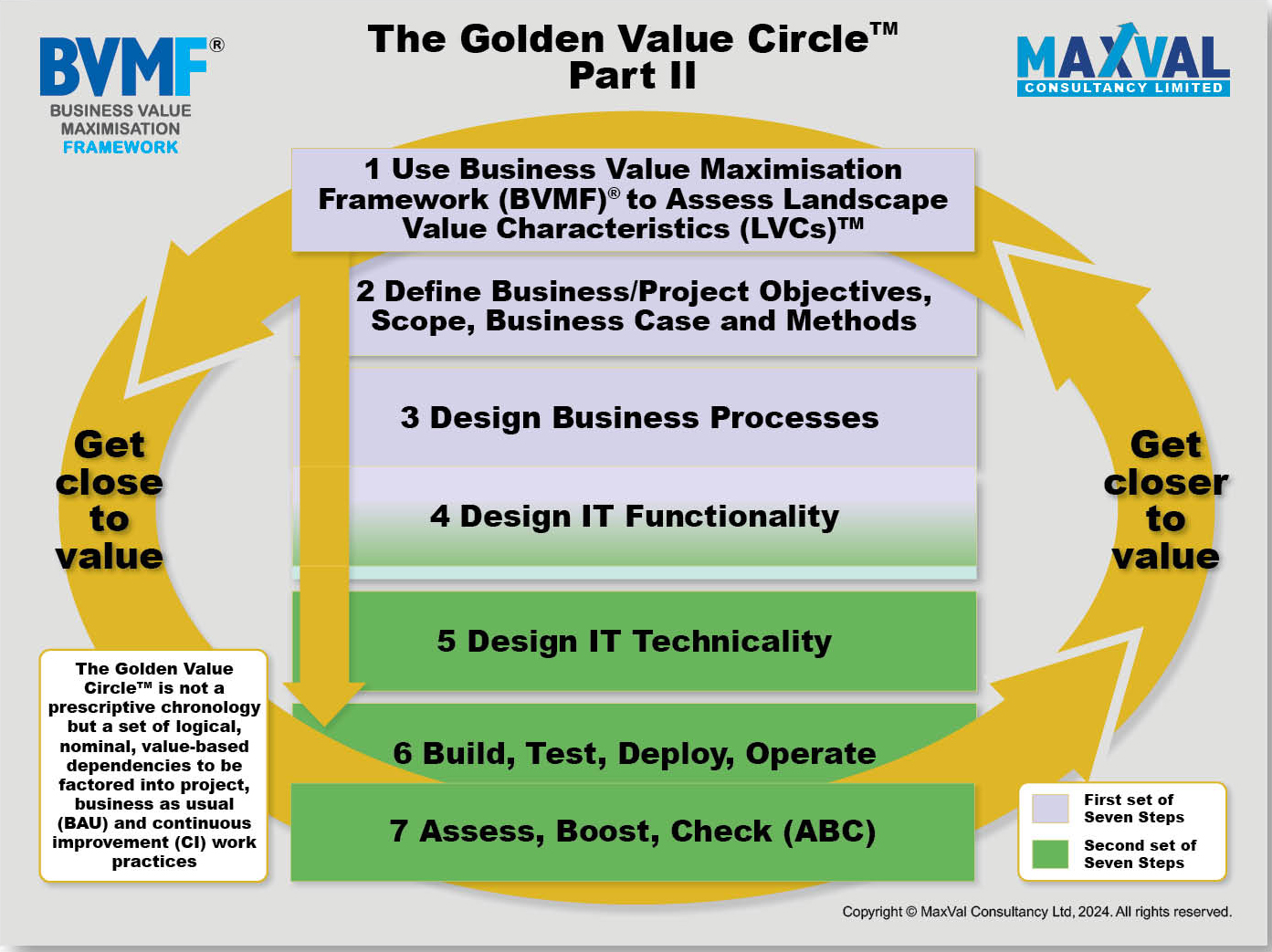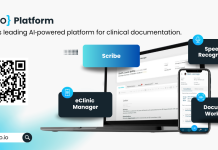David P Jacobs, director of MaxVal Consultancy’s Business Value Maximisation Research and Development Programme, continues this two-part series on increasing business value, success and return on investment (ROI) from IT and digital transformation
In part one, I covered the first four steps of the seven steps to boost IT business value encapsulated within The Golden Value Circle™. I now pick this up at step 4, Design IT Functionality, looking to give optimal power to business processes whose role it is to deliver the objectives defined in the previous step, Design Business Processes.

Design IT functionality
For IT functionality to boost business process performance optimally, its design must be driven by pre-optimised processes. Remember that IT functionality will facilitate a different, more centralised process. Then, incoming IT functionality can further boost this more centralised process with increased quality, speed and accuracy, providing certain key guidelines are followed so that humans and IT do what they are respectively good at.
MaxVal Consultancy uses several models from our Business Value Maximisation Framework (BVMF)® to carry out this important design. Computers and humans think and work differently. We emphasise these crucial differences in our Information Systems Activity/Role Spectrum™. Invariably, not enough consideration is given to these differences. Humans and IT functionality have to combine their respective (different) capabilities to enact a successful business process.
IT should carry out tasks it’s better at, and humans should do what they are good at, complementing each other into a powerful business process ‘team’. BVMF® models and techniques help take this down several levels into the micro aspects of team power optimisation (TPO), which we call Optimal Human-Computer Interaction (OH-CI)™. This is deeper, more fundamental than what used to be called HCI (Human-Computer interface), and more value-driven than whether the user can understand the icons on the screen! We do this business/IT business process ‘team’ optimisation at the macro and micro level, so the macro value conceived is not squandered at micro-implementation, which I see, sadly, so often.
Design IT technicality
Technical professionals, who have the most challenging job on the planet, sadly still don’t always recognise that IT technicality MUST work; often, it doesn’t. When IT systems are not performing optimally at run time, business processes are usually less effective and efficient than in the good old manual days, which I consider immoral, ineffective, and counterproductive.
Yes, IT can do wonderful things, but as a consumer or user, I often experience IT preventing me from doing my work! David Walliams said, “Computer Says No!” which was too bloomin’ true, as good comedy tends to be. We at MaxVal have devised a set of concepts, principles, guidelines and techniques (CPGTs) to optimise such situations.
These CPGTs make up BVMF®’s module Business Practice and Contingency (BP&C)™.
Build, test, deploy, operate
Dependently ‘next’, I suggest you build the IT functionality and the technicality that supports it and test it all together, ensuring you put as much effort into building your optimal business processes that combine human activity with IT functionality in the most powerful way as determined by the Optimal Human-Computer Interaction principles outlined above.
Once you have cut over to your new business processes and associated IT systems, monitor the manifestation of value closely in business as usual (BAU) operation and kick off a continuous improvement (CI) initiative straight away (no rest for the value-hungry) to boost value, success and ROI at regular intervals. Keep boosting value until there is little or no propensity to improve further – a situation most of us are unlikely ever to experience in our business IT project work. Still, it’s a great target to aim at!
Assess, boost, check
Thank goodness, more or less gone are the days when project teams would eventually get a new system live, often years late, celebrate over the weekend and return on Monday to start a new project. Achieving maximum business value requires constant vigilance and effort. Like electricity along a wire, value dissipates if not boosted over time and distance. It can even dissipate through the life of a project before going live, as it often did in the days when waterfall was thought to be the only way to proceed.
The modern iterative approach to IT development has certainly improved value potential in several respects, but only when used with the intelligence and focus I described in part one of this series. Purist agility can throw out as much of a baby’s bathwater as it brings in. Agile may be suitable for IT development, but it’s just one of several methods you must combine for a value-optimal project/piece of work. And do ask how well an agile approach to IT development integrates with the reality of your organisation’s management style and market.
So, once live with a minimum viable product (MVP) or whatever is the first live operation of the new processes/ systems, go back around the loop. Keep going around until the propensity to improve is exhausted. Continuous rounds of assessment, boosting and checking on value will supercharge your auto-assisted processes. We at MaxVal use BVMF®’s Crossword Diagram™ for this. Broadly, this helps break the business process domain down into addressable sub-processes/steps to assess how well each delivers against its objectives. We then split out any sub-standard sub-process/step into its component ingredients and determine whether the process, human users, IT functionality, IT technicality or something else is letting down the holistic delivery of value. The last stage is to fix the problems so the sub-process or step in question contributes more effectively to the value equation.
We also use our Business Value Equation (BVEq)™ to see how each value ingredient affects the others to target any ingredients not pulling their weight. Our module Business Practice and Contingency (BP&C)™ mentioned above is then brought into play to ensure any value designed during planning and development is manifesting at run time. Often, some decent improvement of business process and IT in the design steps doesn’t come through at run time due to a disconnect where such macro value is not properly supported at the micro executional level.
Sadly, too often, run time performance of IT technicality not only fails to support the power of the business processes via the IT functionality but actually degrades the functionality and consequently the business process, sometimes down to levels below where the business processes’ effectiveness and efficiency were before they were transformed! There are many ways to get this wrong and not many ways to get it right!
Good luck, you will get there.

This work is licensed under Creative Commons Attribution-NonCommercial-NoDerivatives 4.0 International.











